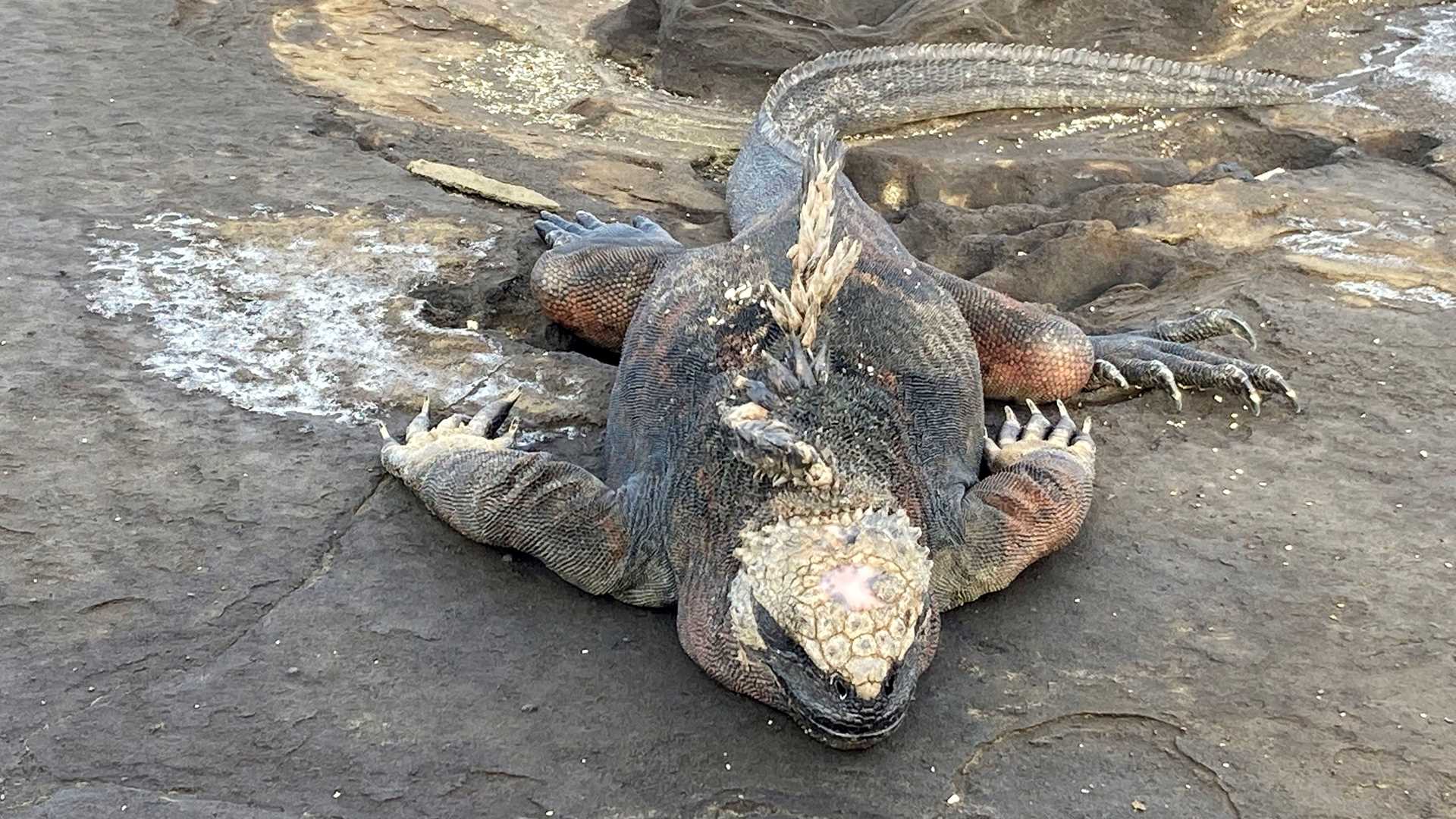Santiago Island is located in the central part of the archipelago; its impressive flora and fauna captivated naturalist Charles Darwin when he visited in 1835. This island has highlands, and of course fresh water. It was inhabited for many years. In 1968, the Ecuadorian government decided to move the last human settlements to other inhabited islands. Since then, 100% of this island is a national park.
After a long navigation from Isabela Island, we arrived in Santiago early in the morning. Before breakfast, we boarded the Zodiacs. We headed to Espumilla Beach, one of the best-known sea turtle nesting sites in the Galapagos.
The beach was marked with many turtle tracks from the night before. The turtles lay their eggs on the highest part of the beach. In the trees, Galapagos hawks observed us intently from the highest branches. We approached some turtle nesting sites, where we found eggs scattered in the sand. Perhaps baby turtles left the nest early in the morning, or maybe ghost crabs dug up the sand to feed on the eggs.
At the end of the beach, our surprise was great. We found two nests of brown pelicans. In one, we observed two chicks whose feathers were still fluffy. In the other, a juvenile, still white in color, waited impatiently for its parents. Heading back toward shore, we came across a group of blue-footed boobies. They were in a feeding frenzy as they tried to catch mullets or black-striped salemas in the calm waters.
After breakfast, our guests boarded the Zodiacs to ride along the coast and around Buccaneer Bay. We observed eagle rays, sea lions, and a land iguana on the rocks, which was a pleasant surprise. Just three years ago, the iguanas were reintroduced from North Seymour Island. The iguana was extinct on this island since the early 1900s due to the impact of introduced animals. They have now returned to their natural habitat.
We completed our morning with incredible deep-water snorkeling. Our guests had the opportunity to discover the wonderful fauna in Buccaneer Bay. We saw whitetip reef sharks, Galapagos sharks, eagle rays, sea lions, and many of the colorful fish typical in this area.
In the afternoon, National Geographic Islander repositioned at Puerto Egas. Our guests disembarked, and we had the opportunity to observe a large number of Galapagos sea lions resting on the beach. They delighted our guests. Inland, we observed a large number of land iguanas, whose yellow color contrasts with the green vegetation typical during this rainy season. Upon reaching the grottos, we observed the fur seals that are abundant in this area. They find refuge in the rocks of the island. With thick fur and an Antarctic past, it is impossible for the sea lions to withstand the high temperatures without shelter.
Walking in the coastal area, we spotted a large number of coastal birds. We observed whimbrels, American oystercatchers, and a curious Galapagos flycatcher. The flycatcher fluttered over our heads, trying to perch on a guest’s camera.
Before sunset, tired but happy, we returned to the ship. The sun illuminated the beautiful landscape as we remembered our incredible week in this wonderful paradise called Galapagos.







